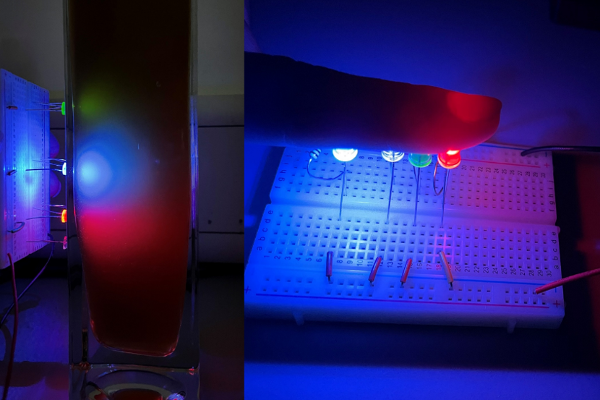
We are delighted to announce the winners of the STS Elionix Scientific Image Competition for Q2 of 2021. The STS Elionix Scientific Image Competition offers a unique opportunity for Tyndall researchers to flex their creative muscle, showcase and share scientific images from their research which they have discovered to be visually striking or informative to the technically excellent. Three winners are each awarded a €100 All-4-One voucher, kindly sponsored by STS Elionix.
The judges for the Q2 competition were Prof. William Scanlon, CEO; Prof. Eoin O'Reilly, Chief Scientist; Peter Smyth, Commercial Director; Ursula Morrish, Marketing & Communications Manager and Graeme Maxwell, Head of Specialty Products & Services.
The exceptional quality and creativity demonstrated resulted in votes cast for three wonderful winners – Ehren Dixon, Siddra Maryam, Dr Vuslat Juska.
Congratulations to all!
Platinum Bloom
Ehren Dixon, Electrochemical Materials & Energy
.png)
Producing Nano-Porous Platinum can sometimes create interesting Platinum deposits. This can result in the fascinating formation of flowers ‘blooming’ from the initial electrode surface into a “blossom like structure”.
Ehren’s research in the VistaMilk SFI project is aimed at creating improvements for electrochemical sensors which can then be used for next generation gas/liquid sensors for the Irish agri-sector.
Nano-porous Platinum electrodes are currently one of these proposed improvements, as illustrated in the image, which boasts improved sensitivity over standard Platinum. It also increases stability versus its Nano-porous Gold counterpart as Platinum electrodes are less likely to be fouled (damaged) when detecting Agri-pollutants.
Light lost in coffee
Siddra Maryam, Biophotonics
.png)
All materials respond differently to different wavelengths of light, and their response to every wavelength determines their colour.
This image represents attenuation of light in coffee and human tissue.
Different wavelengths of light can travel varied distances in the coffee. The green light is the most absorbed and red light is the most scattered. But in the end, all seven wavelengths of white light are lost in coffee, which is why it appears black to us.
Similarly, in human tissue the blue, green and UV light are absorbed. However, the red light is scattered and can pass through the tissue, helping us to see through the body.
This phenomena of light attenuation is the basis of Biophotonics and can be used to save many lives by identifying diseases like early stage cancer.
NanoCuRocks-on-a-chip
Dr Vuslat Juska, Nanotechnology

In the Advanced Nanosensors and Systems research group, the team successfully implement silicon micro and nanotechnologies with surface chemistry, biology and electrochemistry. They design, fabricate and characterise silicon based multiplexed sensing devices to be used as a tool for the detection of several biomarkers in the same sample. The device fabrication is based on several lithography steps, metals depositions, lift-off and etching.
Here in Tyndall, we manufacture such complex devices with high reproducibility on chip, on wafer and on batch production. The resulting ultra-micro scaled multiplexed-sensing-devices are used to construct several biosensors on chip. This SEM image is one of the deposition protocols applied to achieve the accumulation of copper nanostructures on the single band with a 1 µm width and 50 µm length. The rocky morphology of the deposited copper nanostructures is due to the applied solution combination and the applied electrochemical technique parameters. One of the real world applications of such small devices is glucose detection at the highest sensitivity with a linear detection range up to 12 mM.
